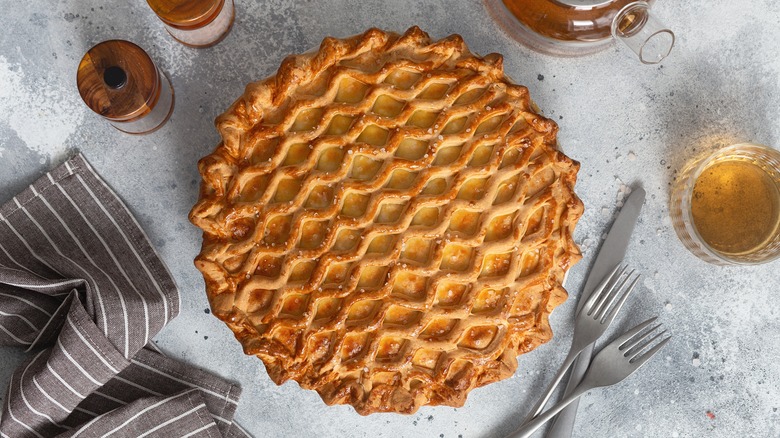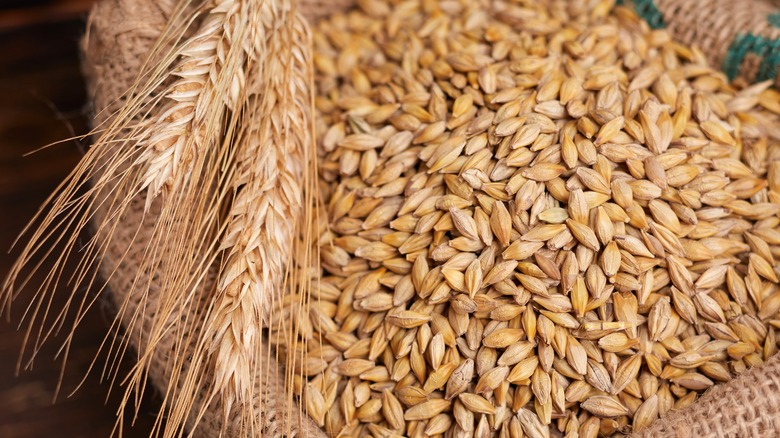Try Adding Whole Grain Flours For A More Interesting Pie Crust
It's easy to think that pie crusts are a science that has been completely perfected, and they don't need the intrusion of ingredients like whole grains. Buttery and flaky, pie crust is an amazing vehicle for fillings from summer fruits to peanut butter. It might not be the best part of your pie, but it is the most essential, and the biggest difference between a good or bad pie often comes down to the crust. That is why so much work has already gone into figuring out the best way to make pie crust, and why we opt for tried-and-true recipes. Pie crust is already so good, and a mediocre one can bring your entire pie down, so why mess with success?
Beyond opting for a homemade crust over store-bought, there isn't supposed to be much to think about with pie crust. It's normally the base for other forms of experimentation, the steady foundation on which you work to build your perfect pecan pie. But like the bread on your sandwich, that means it ends up being overlooked in favor of the fillings as a way to add unique flavors. Pie crust may be great, but no food is so great that it doesn't benefit from a little variation from time to time. That's where whole grain flour can come in.
Whole grains can give your pie crust more flavor and complexity
While standard pie dough brings a great buttery flavor, whole-grain flour can give you stronger wheat notes that stand up to the intensity of pie fillings. Whole grains you can try in place of some, or all, of your white flour, are whole wheat, rye, spelt, or bulgur. Cook's Illustrated states that whole wheat flour will bring extra nuttiness to your dough, while rye can bring a sweeter more earthy flavor. You can also try lower ratios of substitutions if you want to test the changes in taste and texture without going all in on whole grains.
While your pie crust dough recipe and technique should remain pretty much the same when adding whole grains, there are a few small adjustments you should make. According to Serious Eats, you can reduce your butter or fat by about a quarter to account for whole grains' lower gluten development to make sure the crust stays sturdy. You'll also want to up the water or liquid in the recipe by 25% because whole-grain flours absorb more moisture than white. After that, it's just a matter of choosing your favorite pie and trying it out. Whole grains will taste great with fruit classics like apple and cherry, but we think their hearty flavor would also work great as a pot pie or quiche. Looks like even the best things can get a little better.

